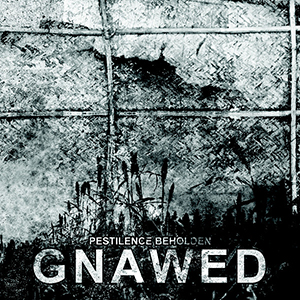 Seven years and three albums into the project, Gnawed’s Grant Richardson continues to release bleak, dissonant electronic music that is exceptionally nuanced and demonstrates not only his knack for antagonistic harshness, but also a penchant for expert sound design. Pestilence Beholden may not reinvent the wheel, but it does deliver nine pieces of moody, at times oppressive industrial noise that stays dynamic and ever changing throughout, and is an expert example of the style.
Seven years and three albums into the project, Gnawed’s Grant Richardson continues to release bleak, dissonant electronic music that is exceptionally nuanced and demonstrates not only his knack for antagonistic harshness, but also a penchant for expert sound design. Pestilence Beholden may not reinvent the wheel, but it does deliver nine pieces of moody, at times oppressive industrial noise that stays dynamic and ever changing throughout, and is an expert example of the style.
Diversity is not usually a term associated with the sound of death industrial music, but Richardson works with the elements associated with the genre but places them in often different and varying contexts.The opening "A Bitter Harvest" is a sleek yet menacing passage of sustained bassy electronics, with some almost pained melodies sneaking through as Richardson piles on the layers.Crunching noise, metallic scrapes, and what sounds like bells and lost radio communications are all present by its conclusion, coming together as a lurching, sinister mass of sound.
It is hard to not feel some old school Maurizio Bianchi sensibilities on "The Hand That Feeds" via its depressive, morose synth melodies (albeit with a greater clarity than Bianchi’s work ever had), but the addition of big, dramatic percussion and heavily processed vocals sound like something much more contemporary.The sound shifts from pensive to harsh and back again but it never relents.A similar structure is at play on "Pestilence Beholden II", as Richardson’s looming, menacing electronics expand, hiding a distant, isolated voice, and eventually met with aggressive, banging metal and monstrous screaming.
However, a piece such as "Who Shall Reap?" is more of a rhythmic one, with distorted drum programming and buzzing electronics underscoring shimmering passages of noise.Heavily sputtering and processed voices appear, but the overall sound is more haunting than pummeling.Structurally, "Wheat from Chaff" follows, though the rhythms are scaled back to a sinister plod, as Richardson’s vocals are mangled to be almost entirely inhuman.Even with this, a slightly melodic passage lurks deep in the mix, keeping some sense of musical grounding at play.
The longest piece is saved for last:"Perdition (Death’s Disease)" starts not with dissonance, but a heavy, dense melodic passage that vibrates menacingly.Voices are present but extremely low in the mix, and not treated with the same level of effects as before.With the noise kept down throughout its eight minutes, I kept expecting it to explode aggressively in to a full on blast of harsh noise before its conclusion, but it never does.
Gnawed’s latest work may not be entirely innovative, but the way he manages to work with the material is extremely effective, and the full sound of the album is a varied and complex one.The mood may stay dark, but Grant Richardson does an exceptional job of creating the sonic equivalent to every shade of gray.
samples:
 
Read More

